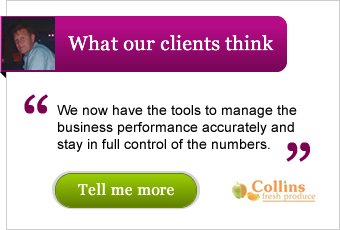How to Purify your Customers05 Dec
In order to test for the purity of water we must have the tools and a system in place that will allow us to attain accurate results. We would do this in order to acquire and extract the benefits from the best water possible.
The same principle can be applied to a business with its customers; the tools being effective salesmanship and the system being a specific marketing strategy. This is important because, as we have all experienced, these ‘impure’ customers do exist. They will haggle you for a cheaper price, find any excuse to complain, and to delay payment. Needless to say, if there are too many customers of this kind, they can be a real threat to any business at a time when the popularity of social networking sites provides them with a voice that can do considerable damage to your reputation.
We must therefore become more selective when targeting with whom to do business. This might sound counter intuitive in such a fragile economic climate, but there are ways to adopt this mentality in a manner that is not only realistic, but also very profitable for your business.
For instance, consider the ‘Pareto’ principle, the widely acknowledged and credited belief that a business will draw 80% of its profit from just 20% of its customers. What is it about these customers that enable them to so easily intertwine themselves with your sales process and with the concept of value? After all, a successful company will always create value for an end user, above the cost of creating that value. There is an easy way to identify and understand how and why this is the case.
Make a list of the best customers you have and compare them to a list of those you consider to be the best potential customers for the service you provide. What do your customers have in common with your prospects? You can then rank your customers by most profitable, best revenue and easiest to do business with and evaluate the characteristics of these companies to determine why they and your best prospects are at the top of each list.
The same can also be done in reverse for your worst customers and least palatable prospects. Either way, after you add current revenue and profitability data along with other information you deem to be important, you will begin to see that those at the top of your lists will become accurate reflections of an Ideal Customer Profile (ICP).
There may be times where an opportunity has strategic appeal beyond your ICP, but then it becomes a measure of how far the opportunity diverges from ideal.
From this we are able to clearly define our target market and embark upon a lead generation programme and develop a database full of genuine opportunities to do profitable business. We achieve a perfect fit between the customer’s needs and our capabilities. Remember that a successful approach includes taking the time to segment the target market in accordance with the priorities of the ICP.
As for those poorly performing customers you already have, see if you can get them to cross the line to profitability. Put prices up, or scale back costly services. The customers who stay compensate for their high overheads and the ones that leave will save you a lot of time and hassle.
Quality over quantity matters.







